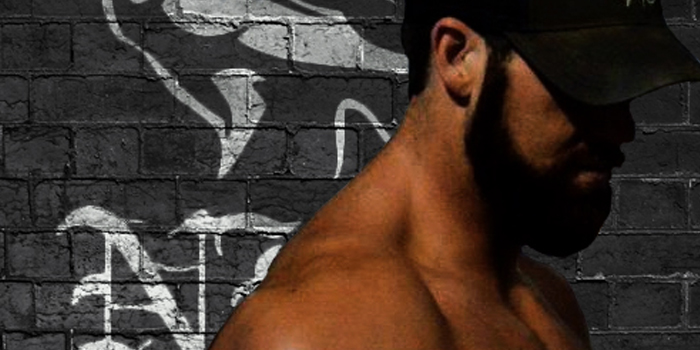
When my facility first opened, we started a powerlifting team that I program. I have always believed that you can constantly improve upon your knowledge and programming, no matter who you are and how long you have been doing it. Therefore, my programming has always been in a constant state of adaptation since the very beginning. Over this time I have run many different variations of many different programs, always making the necessary changes I thought were needed based on my own experience and from the feedback of my lifters.
MORE: 3 Reasons You Should Be Using Triphasic Training for Powerlifting
Our current program is one that has had a lot of success. The current variation is one from which I think many people can benefit. We ran the first variation of this setup in preparation for our last powerlifting meet and it resulted in around 1,400 pounds of total PRs spread amongst nine different lifters. Check out the template below and I will point out some of the main aspects of the six-day triphasic microcycle.
Day 1 — Lower Body Max Effort
Max Effort Non-Competition Squat Movement
- Microcycle 1: Work up to a max triple, then drop 10% for 4x3.
- Microcycle 2: Work up to a max double, then drop 10% for 3x2.
- Microcycle 3: Work up to a max single, then drop 10% for 2x1.
Good Morning/Deadlift: Alternate between volume and a maximum effort each cycle.
- Microcycle 1: Good Morning variation for 5x5, 6x4, 4x6, etc. Do some variation of the number of sets for four to eight reps.
- Microcycle 2: Non-Competition Deadlift Variation. Work up to a max triple, double, or single, then drop 10% for some extra volume.
- Microcycle 3: Opposite-Stance Deadlift for 3x5. Do some variation of the number of sets for four to eight reps.
Day 2 — Upper Body Max Effort
Max Effort Non-Competition Bench Movement
- Microcycle 1: Work up to a max triple, then drop 10% for 4x3.
- Microcycle 2: Work up to a max double, then drop 10% for 3x2.
- Microcycle 3: Work up to a max single, then drop 10% for 2x1.
Vertical Press Variation (Push Press, Fat Bar Pin Press, Seated DB Shoulder Press, etc.) for 5x5, 6x4, 4x6, 3x8. Do some variation of the number of sets for four to eight reps.
Day 3 — Lower Body Medium Triphasic Day
On this day squats are done with a triphasic setup:
- Macrocycle 1: Eccentric
- Macrocycle 2: Isometric
- Macrocycle 3: Dynamic
Shown below is for the eccentric macrocycle:
- Microcycle 1: 70%, 6x3, three-second negative, use bands.
- Microcycle 2: 72.5%, 6x3, three-second negative, use bands.
- Microcycle 3: 75%, 6x3, three-second negative, use bands.
Accessory work for legs, hips, abs, hamstring, etc. This work should be decently high volume at medium intensity.
Example:
- Kneeling Leg Curls — Work up to a tough set of 10. Do three sets, then after your third set hold at the highest position for a 10-second isometric, then drop the weight in half and go to failure.
- Leg Press — Do five sets of 10. Place your feet midway or towards the bottom. Get a long range of motion and pause for three seconds at the bottom of each rep.
- RDL — Four sets of eight against bands.
- Weighted Plank — Work up to a max weight for one minute.
Day 4 — Upper Body Medium Triphasic Day
On this day the bench press is done with a triphasic setup:
- Macrocycle 1: Eccentric
- Macrocycle 2: Isometric
- Macrocycle 3: Dynamic
Shown below is for the dynamic macrocycle:
- Microcycle 1: 70%, 6x3. Bring down to a one-board and let the bar rest completely on the board so that there is very little tension you are putting onto the bar. Let it sit for no more than a one-count, then re-engage and explode the bar off the board.
- Microcycle 2: 72.5%, 6x3, same as above.
- Microcycle 3: 75%, 6x3, same as above.
Accessory work for pecs, shoulders, triceps, back, traps, biceps, etc. This work should be decently high volume at medium intensity.
Example:
- Chest Supported Rows — Elbows out for five sets of 10.
- Hammer Strength Pulldowns — Use a supinated grip for five sets of 10.
- Pressdowns — Use an EZ Bar for five sets of 10
- Hammer Curls — Use dumbbells for five sets of 10.
Day 5 — Lower Body Light Day
This day is for high volume, low-intensity work, and conditioning movements.
Example:
- Leg Press — Four sets of one minute for max reps.
- GHR Hypers — Against bands for three sets of 15 reps.
- Kneeling Cable Crunches — Four sets of 15-25 reps.
- 2500-Meter Row
Day 6 — Upper Body Light Day
This day is for high volume, low-intensity work, and conditioning movements.
Example:
- DB Bench Press — Four sets of one minute for max reps.
- Single-Arm DB Row — Four sets of 15 reps.
- Dips — 75 total in as many sets as needed.
- Standing Band Straight-Arm Pullovers — Three sets of 25 reps.
- 250 Yards Heavy Wheelbarrow
Microcycle Setup — Weekly Split
This microcycle is set up to run six total training days per cycle with four training days each week. This means that each microcycle repeats itself every 10-11 days. For example:
Week 1
- Monday: Day 1 — Lower Body Max Effort
- Wednesday: Day 2 — Upper Body Max Effort
- Friday: Day 3 — Lower Body Medium Triphasic Day
- Saturday: Day 4 — Upper Body Medium Triphasic Day
Week 2
- Monday: Day 5 — Lower Body Light Day
- Wednesday: Day 6 — Upper Body Light Day
- Friday: Day 1 — Lower Body Max Effort
- Saturday: Day 2 — Upper Body Max Effort
Running the microcycle longer than a typical week has allowed our lifters to maintain a high intensity on each training day without suffering the cumulative effects that I’ve seen in the past from having two max effort days every week.
Concentration of Stimulus
One of the biggest changes I’ve made in my programming for powerlifting is the idea of concentrated stimulus. Basically what this means is to compound similar stimuli into each training day and to change that stimulus each day. In other words, instead of having higher intensity work and higher volume work in the same day, separate that stimulus out amongst different days. I found that this makes recovery just a bit easier. My theory on this is that because the nervous system and the muscular system recover at different rates, having something that is highly stressful on both systems will cause greater fatigue and therefore require more fatigue than a more concentrated stress on one system over the other.
Undulation of Intensity
This program provides several different forms of intensity undulation. First, in the microcycle itself, the program has two heavy days, two medium days, and two lighter days. Secondly, from microcycle to microcycle, the intensity increases each week on the heavy days and the medium days.
Triphasic Work and Competition-Specific Work
After reading Cal Dietz's book on triphasic training, we have implemented it in our program with amazing results. Breaking each lift down between its three different movements has allowed us to discover and address different weak points in each lifter’s mechanics. We do this on the medium day utilizing the competition lifts so that there is constant technique work.
This setup allows for easy manipulation of accessory work, volume, specific lifts, and anything else to accommodate for going into a competition or coming out of a competition. You can easily throw in mini “testing” periods to make adjustments to medium day percentages as needed. If you’ve been looking for a new program to check out, I highly suggest you give this one a shot and see if it provides the same results it has for us.











So Micro 1: No belt no knee wraps squat max 3
Micro 2: Belt no knee wraps squat max 2
Micro 3: Highbar no knee wraps Squat max 1
Just looking for some clarification
I don't have they posted up any where. However, I do online programming if you're interested in giving triphasic a try.
If you're referring to the lift chosen on the max effort days then yes. Each microcycle will have a different, non competition lift. So for a raw lifter, the competition lift would be a squat in knee wraps. So anything that's not that will work. If you don't have access to specialty bars you could do different squat variations (front, back, zercher), different bar positions, different foot positions, with or without box at different heights, and with different variations of accommodating resistance. That will give you plenty of variety.